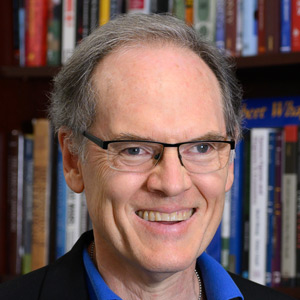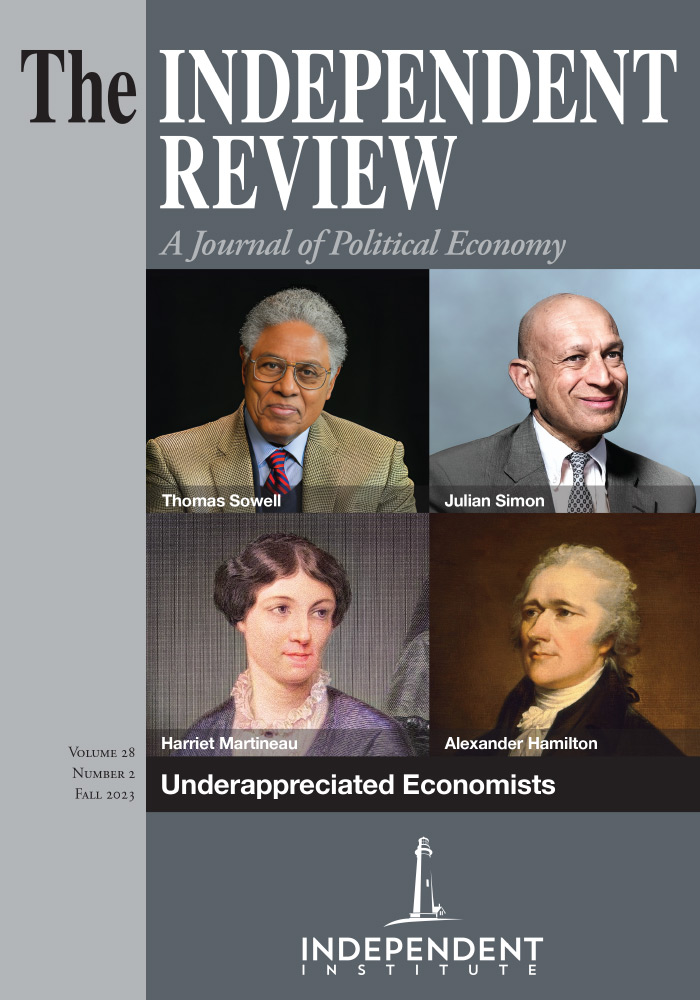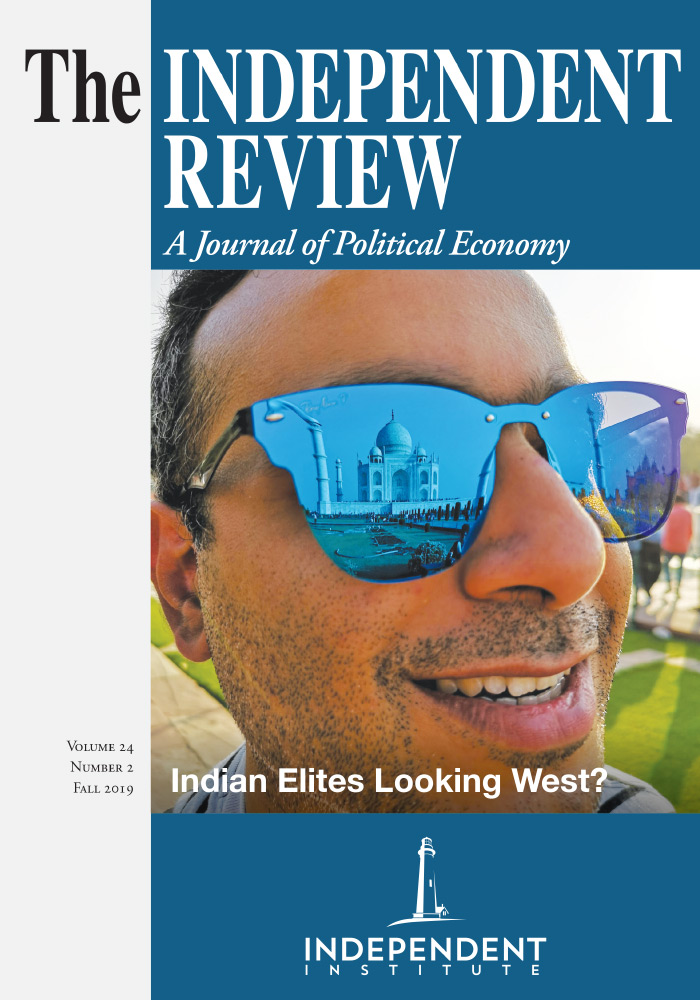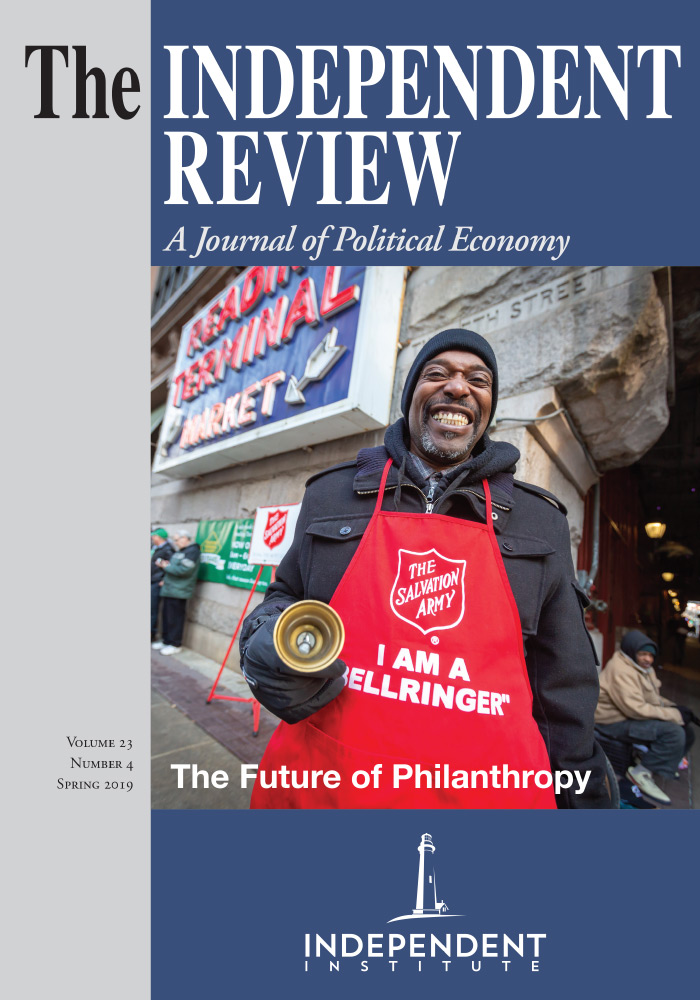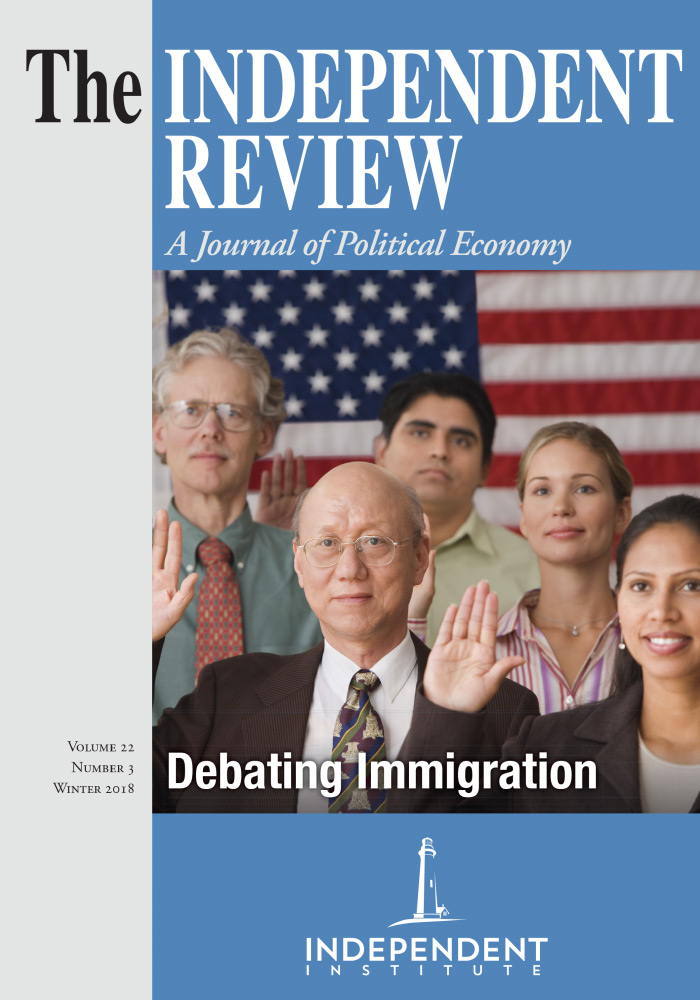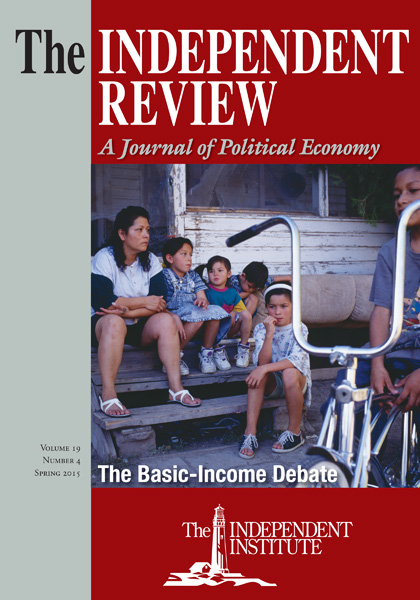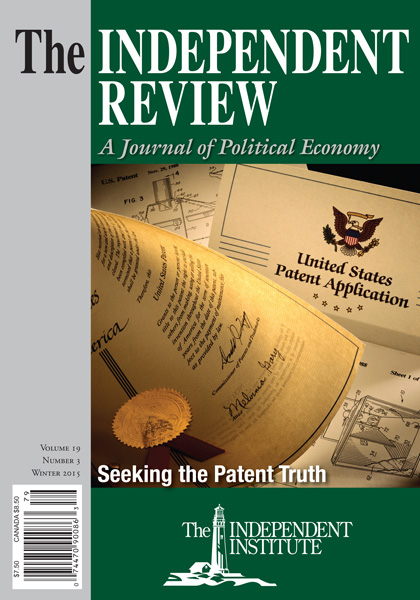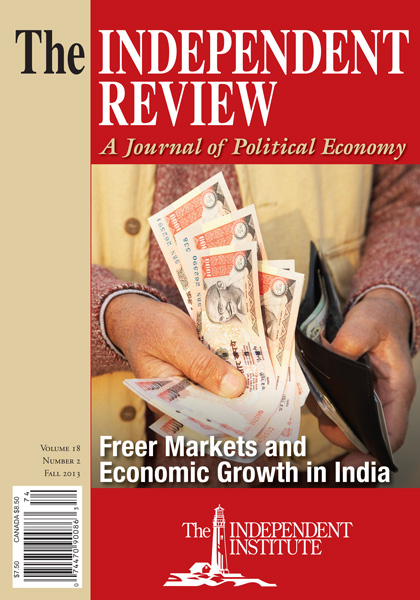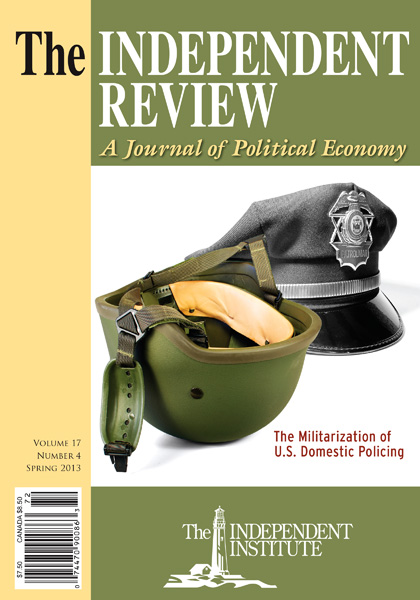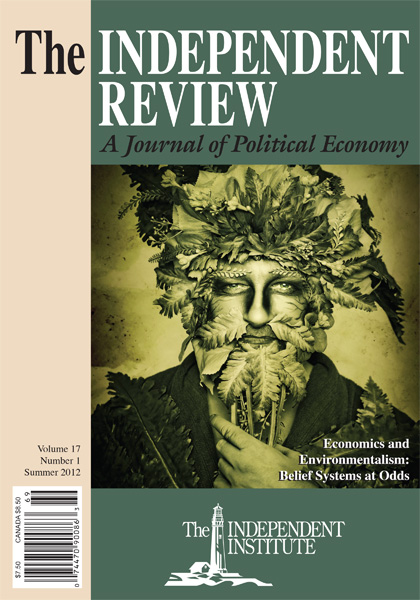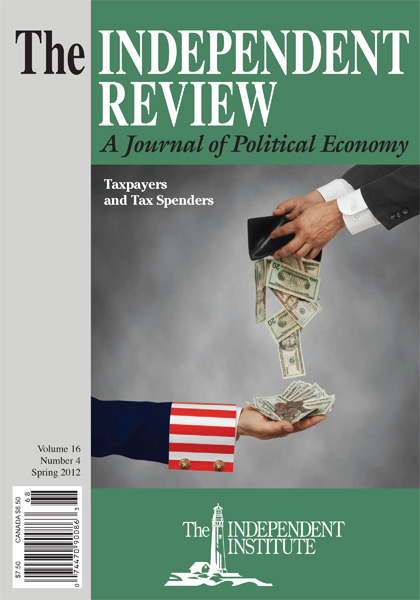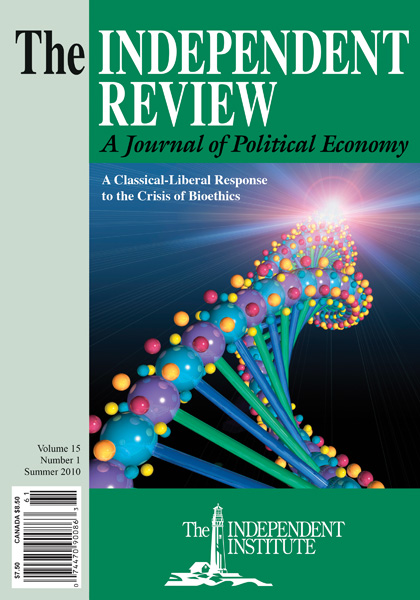In the fifty years since it was published, Murray Rothbard’s For a New Liberty has influenced and inspired libertarians and non-libertarians in the hopes of building a free and productive society. Decades later it is still fresh, energetic, and engrossing. It invites reading and rereading. Before you do so, read the essays in this symposium that put Rothbard’s book into context and grapple with his vision and his roadmap for getting from here (a status quo increasingly at odds with liberty) to there.
Article
As Robert Higgs (1995) explained, revolutionaries “need to understand the nature of the beast they aim to bring down, but they need inspiration, too, because lovers of liberty seek not just to destroy unjustified state power but to build a productive free society.” He cites two works that “combine instruction, inspiration, and visions of a liberated world.” One of these is Murray Rothbard’s For a New Liberty: A Libertarian Manifesto, “which invites us to create a world completely without government tyranny.”[1]
In the fifty years since it was published, For a New Liberty has influenced and inspired libertarians and nonlibertarians in the hopes of building a free and productive society. Decades later it is still fresh, energetic, and engrossing. It invites reading and rereading. However, before you do so, we encourage you to read the six essays in this symposium that put Rothbard’s book into context and grapple with his vision and his road map for getting from here (a status quo increasingly at odds with liberty) to there.
As Lew Rockwell puts it, “Rothbardianism remains at the center of [libertarianism’s] intellectual gravity, its primary muse and conscience, its strategic and moral core, and the focal point of debate.” For a New Liberty presents “a full package of libertarianism in all its glory” and has been the “leading means of exposure” to a complete picture of libertarianism “for more than a quarter of a century” (2006, ix, xi). Make that more than half a century at this point.[2]
Does it all work? Some will say yes. Others will say no. The truth is somewhere in between. No one, I suspect, will agree with all the ideas Rothbard expounds in For a New Liberty. However, even (especially?) if you don’t, the work leaves a lasting impression. Rothbard’s strategy is to pull no punches—to advocate the elimination of government, rather than strategically clipping its wings and narrowing its scope. This purist approach will alienate almost every reader at some point. However, my interpretation is that many readers will forgive what they see as excesses because they agree with the overall strategy. Although Rothbard would almost certainly disagree with this analogy, let’s say a ship is listing badly and in danger of capsizing. It is worth exhorting everyone to lean as hard and as far as possible in the other direction even if the ship would also capsize if everyone literally did lean as much as possible to the other side. So, even if eliminating the state strikes one as an impractical, unattainable, foolish fantasy, acting as if that were the goal might actually bring us closer to the ideal. It is an effective strategy. Even fans of Leviathan are likely to soften their stance after reading For a New Liberty.
For a New Liberty begins with a lively introduction to the “new libertarian movement.” Part 1 consists of two chapters that make up Rothbard’s libertarian creed—one is titled “Property and Exchange” and other “The State.” Part 2, “Libertarian Applications to Current Problems,” considers problems that generally haven’t gone away. It includes chapters on personal liberty, education, welfare and the welfare state, the public sector—chapters on government in business; streets and roads; and police, laws, and the courts—environmental issues, and finally war and foreign policy. A rousing epilogue that outlines a strategy to advance liberty by making it an “adventure,” closes by observing that “liberty has never been fully tried in the modern world; libertarians now propose to fulfill the American dream and the world dream of liberty and prosperity for all mankind” (Rothbard 1973, 317).
An Overview of the Symposium
The articles in this symposium follow the progression of For a New Liberty’s table of contents. David Gordon, in “For a New Liberty after Fifty Years,” puts the book into the context of its time (and our time) and draws out some important themes. Gordon shows how Rothbard shot down claims that see market competition as a social Darwinian struggle for survival, instead seeing the market as an institution enabling mutually beneficial cooperation; indicates how Rothbard wounds (perhaps mortally) utilitarian arguments; and warns against the assumption that because democracies are “better” than dictatorships, they are necessarily more peace loving.
Matt Zwolinski dissects Rothbard’s chapter on property and exchange in “Libertarianism, Oversimplified.” Arguing from a libertarian perspective, Zwolinski concludes that “Rothbard’s libertarianism suffers from a number of serious deficiencies. The arguments that Rothbard provides for his particular version of libertarianism are radically incomplete and, in some cases, patently fallacious. And the conclusions that he reaches are grossly implausible, even when judged by the standard of an overriding commitment to individual liberty.”
In the symposium’s next paper, “Seeing the State through For a New Liberty,” Jason Byas argues that the central chapter of For a New Liberty is “The State.” “The central moment ... is when Rothbard tells us that ‘if you wish to know how libertarians regard the State and any of its acts, simply think of the State as a criminal band, and all of the libertarian attitudes will logically fall into place.’” Rothbard, Byas concludes, exhorts the reader
to see the state in a particular way: not as just another piece of social technology that we might pick up or put down, but as a parasitical enemy that imposes itself upon us and guides its actions by however it can best exploit us....
The picture we have of the state and our relationship to it will decide which normative and descriptive facts naturally strike us as salient. It is for this reason that [Rothbard] spends so much time painting a picture of his own.
Once you see it, you can’t unsee it.
After analyzing those two core chapters, the symposium participants turn to three important chapters that apply Rothbard’s ideas to specific policy areas. How do we replace the state? In “Privatize the Public Sector: Murray Rothbard’s Stateless Libertarian Society,” Randall Holcombe shows that Rothbard “provides concrete answers to the economic doctrine of market failure. In response to arguments about why, in theory, markets cannot produce particular goods or services, Rothbard offers realistic scenarios to explain how markets can replace everything government does. He cuts the legs out from under the theoretical arguments that markets ‘fail.’”
Peter Earle and Ryan Yonk, in “Conservation, Ecology, and Growth in For a New Liberty,” show that his “recognition of the potential for private individuals and the marketplace to deal with environmental issues is emblematic of Rothbard’s approach both to economics generally and to the implications of policy specifically.” They examine his arguments and extend them by exploring the development of environmentalism and environmental policy in the fifty years since the publication of For a New Liberty.
Finally, Christopher Coyne and Yuliya Yatsyshina’s “Murray Rothbard on War and Foreign Policy” closes the symposium by examining Rothbard’s arguments that consider “American foreign policy as imperialism, war as the health of the state, practical and ethical issues posed by nuclear weapons, the importance of nuclear disarmament, and the strategic use of smears and propaganda by government actors to both undermine antiwar views and to generate public support for the state’s interventionist foreign policies.” In each case they discuss the contemporary relevance of these issues.
Much Have I Travell’d in the Realms of Gold[3]
To many readers, encountering For a New Liberty is as transformative as first looking into Homer. The book opens with a compelling question: Could it—Rothbard’s vision of a new liberty—work in practice? We still don’t know, as a stateless modern world has never been attempted. However, Rothbard’s emphatic yes opens new vistas—a new vision of peaceful waters, like those open to someone first gazing upon the Pacific Ocean from the heights of the isthmus in John Keats’s poem. Nonetheless, like a conquistador, Rothbard immediately burns bridges, cutting off paths of retreat. My summary, penciled into the margin of my copy of For a New Liberty, reads “boo to liberals,” “boo to conservatives,” and “boo to the Constitution,” which Rothbard sees as “an illegal and statist coup d’état against the far more libertarian Articles of Confederation” (Rothbard 1973, 14).[4] I see the Constitution as a vast improvement over the Articles, which helped win the Revolutionary War but couldn’t deliver prosperity and imperiled freedom in the not-so-libertarian states.[5] Yet the bridge burning works to a degree, as it invites (dares?) the reader to build a bridge from his own -ism to Rothbard’s.
In the chapter “Property and Exchange,” Rothbard argues that the “nature of man is such that each individual person must, in order to act, choose his own ends and employ his own means in order to attain them.... Violent interference with a man’s learning and choices is therefore profoundly ‘antihuman’; it violates the natural law of man’s needs” (26). He then builds a Lockean theory of how self-ownership requires ownership of property: “if the original land is nature- or God-given then so are the people’s talents, health, and beauty. And just as all these attributes are given to specific individuals and not to ‘society,’ so then are land and natural resources” (34). Human rights and property rights “are inextricably entwined; they stand or fall together” (44).
Next comes the crucial chapter on the state. The argument hits so hard that many readers will recoil. “For centuries the State has committed mass murder and called it ‘war’; ... has enslaved people into its armed battalions and called it ‘conscription’ in the ‘national service’... has robbed people at bayonet point and called it ‘taxation’” (49). Many readers will reply: “I agree that there’s much truth to this, but ... some wars are just, and I try to pay my taxes without really being forced to, as I want to do my part to be a worthy member of society.” If you don’t feel robbed by taxation and oppressed by the state, Rothbard seems to pity you. Many readers will push back against Rothbard’s later statement that wars are invariably battles between “two sets of thieves and aggressors” (284), remembering that the U.S. military— not a band of thieves—liberated much of Europe from Nazi Germany. He calls the U.S. the twentieth century’s “most warlike” government and says that Joseph Stalin, whose Red Army annexed most of Eastern Europe and continued to occupy it when Rothbard’s book was published, was “far from being expansionist” (294). In short, he does not (cannot?) concede most people’s real concern that a state is needed to ensure freedom from domestic and foreign threats—that stateless anarchy is not idyllic. He does not concede the common sentiment that government is necessary and must be tamed rather than slain.
Rothbard’s central point is that the state is merely a predator, a plunderer, and a parasite—he sees no good in it. He is clearly not a public choice economist who sees politics as “exchange.” Instead, he sees politics solely as regularized violence. Would the disappearance of the state lead to chaos? Your reading of history and the nature of man will be part of your answer. Rothbard’s reading says that the specter of this chaos is a myth created by the state.
Who is the state? “Clearly the ruling elite consists at any time of (a) the full-time apparatus—kings, politicians, and bureaucrats who man and operate the State; and (b) the groups who have maneuvered to gain privileges, subsidies, and benefices from the State” (56). There are “two unequal and inherently conflicting classes in society: those who, on net, pay the taxes ... and those who, on net, live off taxes” (56–57). By Rothbard’s definition, at this point in history it may be that the majority of Americans are part of the state—having “maneuvered to gain net privileges.” For example, at the federal level the majority of Americans receives transfers greater than the taxes they pay (Early 2018).
One factor that makes For a New Liberty so interesting and readable is the vast range of problems Rothbard addresses after his argument that the state must be abolished. In “The Problems,” he lists a litany of woes that are to be blamed on the state—the war in Vietnam, the military-industrial complex, traffic congestion, water pollution, air pollution, power shortages and blackouts, lousy telephone service, “bland programs and distorted news” on television, the welfare system, urban housing, labor strikes, a failing educational system, and high taxes—among others (83–84). In each of these cases his arguments are clear and well reasoned.
It is interesting to consider the problems of his era (or ours) that he omits. Are there serious problems that aren’t or cannot be laid at the feet of the state? Among the problems I remember from the 1970s are soaring divorce rates, soaring drug usage (my cohort’s drug use was the peak and our SAT scores were the pits), and other problems of bad behavior. The book oddly downplays cultural and individual moral failings. Rothbard envisions something akin to Utopia if only the state would go away, assuring us that people will act responsibly, but it is not clear that he believes in duties—only in rights. Instead, he inserts an odd argument that people were less moral in the era when the evil of pornography was bottled up or banned by custom and law. “The irony . . . is that by forcing men to be ‘moral’—i.e., to act morally—the conservative or liberal jail-keepers would in reality deprive men of the very possibility of being moral” (118, emphasis in the original). Rothbard seems to be saying that if we make it harder to get pornography, for example, we deprive people of the very possibility of being moral. Many readers will reject this conclusion.
The shortcomings of this point of view are compounded in his discussion of abortion. “If we are to treat the fetus as having the same rights as humans, then let us ask: What human has the right to remain, unbidden, as an unwanted parasite within some other human being’s body?” (121). The tyrannical coercive government is a parasite and now a defenseless fetus is placed in the same category. The crucial word in this sentence is unbidden. Plasmodium falciparum, the protozoan parasite that causes malaria, is certainly “unbidden,” but portraying a baby this way will strike many readers as perverse or worse. The fetus had no existence and was “bidden” into existence by the actions of his or her mother and father in almost every case. At best, this is a major blind spot in Rothbard’s thinking about the “no harm” principle.
One wonders if Rothbard realizes it is hyperbole when he says—in a section on how private business can provide services like defense, firefighting, streets and roads, water, sewage and garbage disposal, and mail delivery—that we “just know— by economic theory and by historical insight—that such a free market will do the job infinitely better than the compulsory monopoly of bureaucratic government” (196, emphasis added). Later he says that modern Americans have a standard of living that is “infinitely higher” than pre-Columbian Americans (257). Most readers will nod their heads when Rothbard lists services that private enterprise can do better, but a couple of them will raise many an eyebrow. Most importantly, can the administration of justice and national defense work without a “night watchman” state with a monopoly on the use of force? Rothbard firmly believes that they can. He harks back to premodern periods. Ireland between AD 500 and 1500 is a favorite example, where stateless societies handled these issues. Most readers will be unfamiliar with these cases and will wonder whether their examples can actually carry over to a modern society. Why, for instance, didn’t these stateless societies achieve sustained economic development, as ours has?
His vision of a peaceful, anarchic world—to be more precise, an anarchic world that is more peaceful than the world in which we live—is perhaps the hardest sell in For a New Liberty. “A libertarian world, then, even if anarchic, would still not suffer the brutal wars, the mass devastation, the A-bombing, that our State-ridden world has suffered for centuries. Even if local police clash continually, there would be no more Dresdens, no more Hiroshimas” (226). This vision belies the empirical fact that violence—including state violence—has been in a long-term decline, as demonstrated in works like Steven Pinker’s (2012) Better Angels of Our Nature (see also Our World in Data, n.d.). In fact, for almost eighty years there have been no more Dresdens or Hiroshimas. If all states withered away, peace might reign . . . until one society deviates, and its state is in a position to conquer the others. Rothbard’s riposte to the legitimate fear that in a stateless society gangs will form—not peaceful corporate police agencies and arbitrators—is to say this is no different from the status quo: “And, indeed, what is the State anyway but organized banditry?” (Rothbard, 246). Many readers will be skeptical.
Concluding Thoughts
These critical thoughts are not meant to downplay the importance of For a New Liberty. With questions of “social justice” at the forefront today, perhaps the timeliest question Rothbard addresses is how we can help the poor and oppressed without bringing in the state. He argues that because the state keeps people poor and oppresses them, the first task is for it to get out of the way—removing roadblocks like minimum wage laws and abolishing taxes. After this happens people will use their ingenuity—individually, through private enterprise, and in nonprofit groups such as churches and voluntary organizations—to solve the problems that simply shouldn’t involve the coercive power that is the state. His bottom line is that the state should not do what others can do better (and do without coercion), and he provides a vista for seeing, with “wild surmise” across the craggy landscape to “realms of gold” that the weary travell’r had not imagined. Can we make it to that distant shore? The reader—new map in hand—is heartened that a path is open to a better place, even if it is not exactly the land described by Rothbard.
The range of issues he tackles, the richness of his historical palette, his emphatic prose, and especially the unity of his vision make Murray Rothbard’s For a New Liberty an enduring classic that deserves renewed attention.
Notes
[1] The other book is Milton Friedman’s Capitalism and Freedom.
[2] Google’s Ngram Viewer shows that references to Rothbard are still near an all-time high.
[3] My allusions are to Keats’s “On First Looking into Chapman’s Homer,” published in 1816. Keats had Cortez discovering the Pacific, although Balboa was the first Spaniard to do so. Cortez burned his fleet, rather than his bridges.
[4] As I see it, one sign of a good book is the ubiquity of marginal comments. Few books on my shelves have a higher ratio of my scribbling to text than For a New Liberty.
[5] Peter Lindert and Jeffrey Williamson (2016, 86) give a good overview of the economic woes of the period before the formation of a new government under the Constitution. They conclude that there was a “truly huge economic disaster between 1774 and 1790,” with per capita incomes falling by a greater percent than during the Great Depression.
References
Early, John. 2018. Reassessing the Facts about Inequality, Poverty, and Redistribution. Cato Institute. Policy analysis no. 839. April 24, 2018.
Higgs, Robert. 1995. The New Revolution for Liberty. Independent Institute. March 21, 1995.
Keats, John. 1816. On First Looking into Chapman’s Homer.
Lindert, Peter, and Jeffrey Williamson. 2016. Unequal Gains: American Growth and Inequality since 1700. Princeton, N.J.: Princeton University Press.
Our World in Data. n.d. The Visual History of Decreasing War and Violence. Accessed November 19, 2023.
Pinker, Steven. 2012. The Better Angels of Our Nature: Why Violence Has Declined. New York: Penguin.
Rockwell, Lew. 2006. Introduction to For a New Liberty: The Libertarian Manifesto, by Murray N. Rothbard, ix–xii. Auburn, Ala.: Ludwig von Mises Institute.
Rothbard, Murray N. 1973. For a New Liberty. New York: Collier Macmillan.
| Other Independent Review articles by Robert M. Whaples | ||
| Spring 2024 | GOAT: Who Is the Greatest Economist of All Time and Why Does It Matter? | |
| Spring 2024 | Everyday Freedom: Designing the Framework for a Flourishing Society | |
| Spring 2024 | The Two-Parent Privilege: How Americans Stopped Getting Married and Started Falling Behind | |
| [View All (93)] | ||


